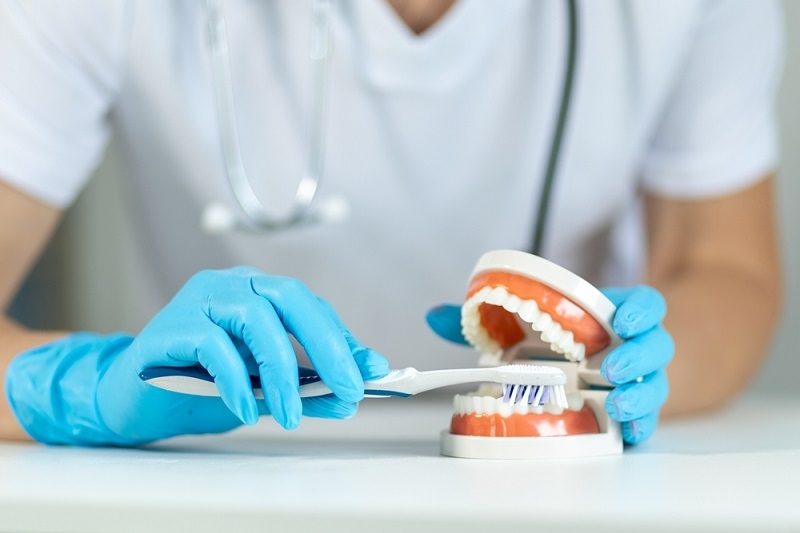
It takes more than brushing twice a day to keep the teeth clean and healthy; it depends on how you brush your teeth. Most people underestimate the importance of the brushing technique, thinking that any quick rub will suffice. If you use the correct brushing technique, you successfully remove plaque, protect enamel, and keep your gums healthy. If you brush correctly, you can form a barrier against cavities and encourage overall dental hygiene for the long haul. The proper method for brushing your teeth, along with understanding what mistakes to avoid, will bring you one step closer to effective brushing that supports a lifetime of a bright smile.
Good oral health begins with developing a solid understanding of proper brushing techniques. Brushing incorrectly can leave plaque behind or harm your gums and enamel. To do it properly, you should be able to reach every surface of the tooth with your toothbrush while being gentle enough to protect your gums. Learning proper brushing techniques offers several benefits.
Benefits include:
By practicing good brushing techniques routinely, you will notice a positive difference in your oral health and require fewer unnecessary dental visits.
Knowing the correct method of brushing can transform an ordinary daily habit into an efficient cleaning method. Most people rush through the process or put too much pressure on their toothbrush, which can lead to gum irritation and enamel wear. The secret is to adopt a systematic approach to tooth brushing that is both gentle and efficient, involving the cleaning of every surface.
Proper instructions for brushing your teeth:
If you brush correctly, you can clean thoroughly while avoiding sensitive areas, allowing you to experience 'truly' effective brushing.

Regardless of good intentions, people often make mistakes that can hinder the effectiveness of their brushing routine. Recognizing them allows you to fix them and protect your oral health.
Common brushing mistakes:
If you address these brushing mistakes, you will be more efficient in your brushing techniques while being gentle on your teeth.
Knowing how to brush your teeth properly elevates your oral hygiene habits from good to great: It is not about brushing more vigorously; it is about brushing more effectively. You can ensure you are brushing your teeth properly by following these steps:
When you adopt these habits as part of your daily routine, you will brush your teeth faster and have cleaner, healthier teeth.
Your gums are as important as your teeth. Correct brushing techniques help protect the delicate gumline, while improper brushing can exacerbate problems such as gingivitis and gum recession. Brushing too hard, though, can irritate gum tissue and lead to long-term sensitivity.
Some reminders for brushing effectively near the gums:
By using an effective brushing routine, you can ensure that both stay strong and healthy without adding discomfort.
How effective you are at brushing is very reliant on the tools you use. A good toothbrush and appropriate toothpaste will provide you with more effective and comfortable cleaning results.
Using the recommended tools, foods, and toothbrushing method should allow you to use the toothbrushing technique properly while reducing brushing mistakes that can affect the efficacy of your results.
Timing plays a significant role in the effectiveness of your brushing. What many people don't realize is that brushing at the wrong time, or simply not brushing long enough, also reduces the effectiveness of even the most effective brushing methods. Optimal times to brush:
Avoid brushing immediately after consuming an acidic meal or drink, as it can weaken your enamel. Waiting about 30 minutes will allow safe and effective enamel preservation and brushing of your teeth.
Good brushing technique is beneficial for everyone, but young children and seniors may require some additional considerations.
Be sure to model and demonstrate the proper brushing technique early, using a child-sized toothbrush with soft bristles. Try to incorporate brushing into your daily routine, making it an enjoyable experience each day.
Combine the suggestions above with the use of ergonomically designed toothbrushes with comfortable handles. Then, pay close attention to the gum sensitivity if they have any dental restorations. They may consider using electric toothbrushes to make brushing easier and more effective.
By modifying how you help establish the toothbrushing method according to age and ability, you lead everyone in the family to develop healthy oral hygiene habits.
Even if you think you’re brushing correctly, some signs indicate you might need to adjust your brushing techniques.
Watch for these warning signs:
If you notice these symptoms, it’s time to review your toothbrushing method and consider consulting a dental professional to ensure you brush correctly and maintain optimal oral health.
Mastering the proper brushing techniques ensures your smile stays healthy and bright for years to come. By using the correct brushing method, avoiding common brushing mistakes, and committing to effective daily brushing, you can protect your teeth and gums from future damage. Good brushing habits today mean a stronger, cleaner smile tomorrow.
This content was created by AI